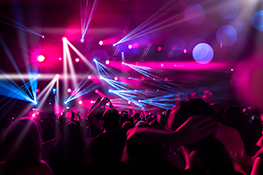DMX Stage Lights: A Beginner’s Guide
DMX, or Digital Multiplex, is the industry standard protocol for controlling stage lighting. If you’re new to the world of stage lighting, understanding DMX is crucial. This guide will break down the basics of DMX and how it can enhance your stage productions.
What is DMX?
DMX is a digital communication protocol that allows you to control multiple lighting fixtures from a single location. Think of it as a language that allows your lighting console to “talk” to your lights.
Key Features of DMX:
- Multiple Fixture Control: DMX enables you to control numerous lights simultaneously, simplifying complex lighting setups.
- Precise Control: DMX allows you to adjust parameters like brightness, color, and effects with high accuracy.
- Flexibility: DMX allows you to easily create and recall lighting cues, saving time and effort during rehearsals and performances.
- Distance Compatibility: DMX signals can travel over long distances, making it suitable for large venues.
How Does DMX Work?
DMX uses a standard 5-pin XLR connector to transmit data between your lighting console and your fixtures. The data is sent in packets, each containing information about a specific fixture’s settings. When a lighting console sends a DMX signal, the connected fixtures interpret the data and adjust their settings accordingly.
Benefits of Using DMX
DMX offers several benefits for lighting designers and professionals:
Improved Efficiency:
- Reduced Setup Time: DMX eliminates the need for individual controls for each fixture, speeding up setup and breakdown.
- Streamlined Control: A single console can control multiple fixtures, simplifying operations and reducing potential errors.
Enhanced Creativity:
- Advanced Effects: DMX enables complex lighting sequences, chases, and special effects, adding a dynamic layer to your productions.
- Color Mixing and Control: DMX facilitates precise color mixing and manipulation, allowing for a wider range of artistic expression.
DMX for Beginners
Getting started with DMX can seem daunting, but it’s easier than you might think. Here are some helpful tips for beginners:
Start with the Basics:
- Choose a Beginner-Friendly Console: Many consoles offer simplified interfaces and user-friendly features for beginners.
- Practice with Simple Fixtures: Begin with basic fixtures and gradually work your way up to more complex ones.
- Learn the DMX Addressing System: Understanding DMX addressing is crucial for controlling individual fixtures.
Explore Resources:
- Online Tutorials and Forums: Many resources are available online to help you learn about DMX.
- Professional Training: Consider enrolling in a DMX training course to gain in-depth knowledge and practical skills.
Conclusion
DMX is a powerful tool that unlocks a world of creative possibilities for lighting designers and professionals. While it may seem complex at first, understanding the basics of DMX can significantly enhance your stage productions. Start with the tips mentioned above, and soon you’ll be creating stunning lighting designs with ease.
Contact Us
For any questions or assistance with DMX stage lights, please contact us:
- Phone: 1800 200 6000
- Mobile: +91 90150 60000
- Email: info@stagelights.in


 Auditorium Construction Services
Auditorium Construction Services 